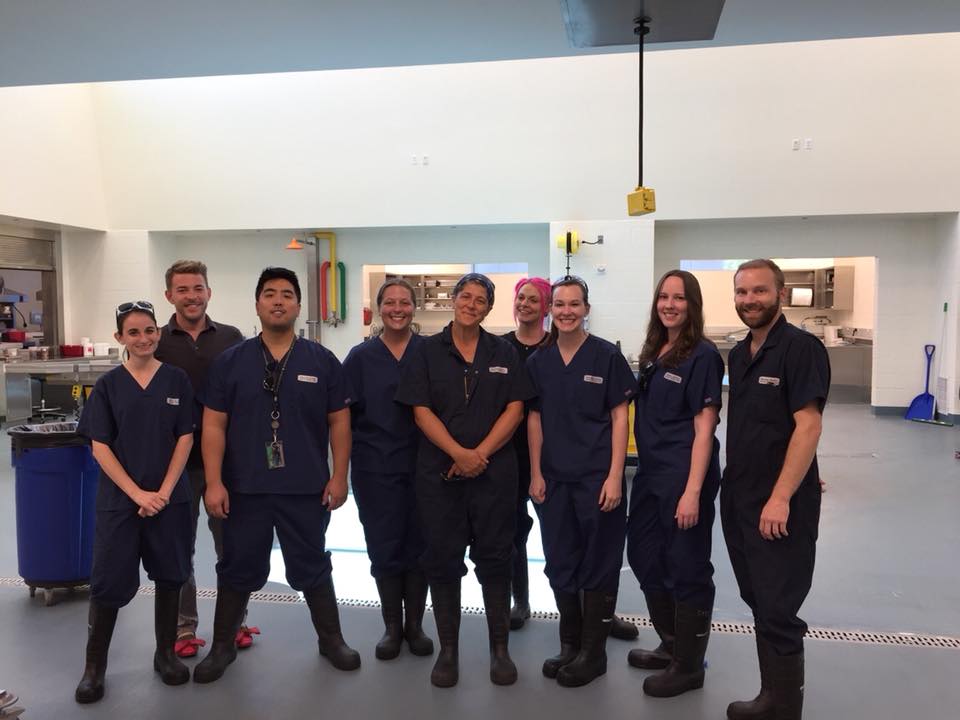Veterinary Forensics - Justice for AllNovember 29, 2017By Gregory Gstrein The day started off like any other, wake up and get to school early to study. It was early May in Phoenix, AZ which means the weather couldn’t decide if it wanted to be warm or cold. My day ended up being as unpredictable as the weather. I anticipated the day to be like the few before it; review cases from the previous day, refresh our memories of common diseases and their pathological presentation, and then move on to the pathology floor to work the day’s cases, which mostly come from Midwestern’s Companion Animal Clinic and others from referring veterinarians in the surrounding areas. Little did I know that on this day I would be walking into my first forensics case and that it would lead me down a path I unknowingly have been preparing for all my life. It was the first week of my pathology rotation at Midwestern University’s Diagnostic pathology center. The building had been under construction since my class started in 2014, and was newly opened. The walls were white, the floors polished and the books were clean. Five of my classmates and I were the third group to grace the pathology center’s halls. The rotation program was still in its infancy but the few classmates that came before us had already been giving us hints as to what to expect. The rumor around campus was that this rotation was going to test the very core of our being. With a full year of gross and clinical pathology during our second year, we were hoping we had learned enough to not fail the rotation. When I think back on my second year, the in-class pathology learning was daunting but I enjoyed every minute spent in the laboratory. This was due to the fact that I was finally able to see disease. I was finally able to touch disease and determine for myself what certain diseases looked like and how they specifically affected the tissue involved. Thinking about it now, the classes gave me the words and images I needed to describe and understand pathology but it was my childhood that ultimately set the course for this day. I grew up in a law enforcement family. During the 1980’s, my father worked undercover in a narcotics division in my home county. Some of my fondest memories are questioning him about a stack of pictures he kept locked up. Pictures of his infiltrative teams, pictures that showed a dozen men holding hand guns, shotguns and rifles in both hands while standing behind mountains of drugs and cash. To my young mind these police men looked like superheroes taking on the cartels and drug dealers that were constantly being portrayed on TV and in the movies. As a child I remember wanting to understand what my father did, so I watched shows like Cops. Cops made me feel like I was sitting in the squad car next to my father. The cameras showed me how the suspected criminals acted, giving me a front row seat to their fears and desires. As I got older, detective and non-fiction crime novels peaked my interest. I learned from the Sherlock Holmes novels that all angles need to be considered when investigating a crime and that the best way to stop a criminal was to anticipate their actions. I would constantly ponder the different responses my father would have to make when dealing with such diverse “mad men.” These amateur studies in crime solving gave me a strong passion for justice and, with my love of animals, a burning desire to stop animal abuse. A forensics elective was offered during my last quarter of classes, which I signed up for with enthusiasm. It was being taught by two seasoned forensic veterinarians, Dr. Alexandra Brower and Dr. Nancy Bradley. We went into the details of state and federal laws as they pertained to animals. We reviewed first hand cases my professors were involved in, giving us the opportunity to see what crimes truly looked like. They impressed upon us the importance of a veterinarian’s role during a crime scene investigation. That we are to be experts used to help the investigation and to not be a source of further complication. We learned the difference between an expert witness and a factual witness, the latter only being used as a presenter of facts and not opinion. I was a constant stream of questions and speculation, I always wanted to know more. We visited a court room to talk with prosecutors, went to the state forensics laboratory, and ended our quarter with a mock crime scene. The room was decorated to look like a crime scene with trash, paraphernalia, pentagrams, ropes and what appeared to be an abused animal. My classmates and I relished the opportunity to put our skills to the test. Our excitement led us to taking too many photos and marking everything as evidence, but after reviewing the scenario, we all walked away with a deeper understanding of what it requires to investigate a scene professionally and effectively. These previous experiences helped shape my actions on this fateful day, which started with Dr. Bradley coming into the pathology center and asking if any students wanted to join her on a forensics case. I had been silently waiting for an opportunity like this to come in and I eagerly jumped in. She presented me with the history of the case stating that the Phoenix police department had discovered a dead dog that was found shot in a field, and that the Arizona Humane Society was transporting the body to us. Midwestern works with both the Phoenix P.D. and Arizona H.S. in regard to animal abuse cases. After signing over custody to us, we found out that it was a one year old female spayed golden retriever mix. We had no further investigative information so we took the body over to Midwestern’s Companion Animal Clinic for radiographs. This is used to help us identify tissue trauma and foreign objects within the body. We then started on the necropsy. Dr. Bradley reminded me to take care with handling the body as evidence can easily be lost in transport and within the body bag. We took meticulous pictures and fastidious notes. Upon external examination of the body we found two bullet holes on both sides of the dorso-cranial thorax. On the right side of the thorax we examined a wound with hair and debris within it. Once shaved, the measured wound was found to be 1 x 1 cm wide with a dark circumferential tinge to it, which we suspected to be ballistic residue. The left thorax wound had hair pushed out, and when shaved measured 1.5 x 2 cm with an irregular pedunculated flap of skin attached. The measurements of the wounds and the characteristics of the hair and debris around them led us to determine that the hole on the right side was the entrance wound and the hole on the left side was the exit wound. To further determine the trajectory of the bullet, we inserted a probe into the wounds. This gave us a visual aid in identifying the path of the bullet, which appeared to be moving cranially from right to left. When studying ballistics we are taught that the entrance wound can be determined by the smaller circumference hole. It usually has material within it and in most cases the hole will have been darkly tinged by the bullets friction and gun powder, called the abrasion ring. The exit wound will be larger in comparison due to the additional injury caused by the bullets momentum. Due to the elasticity of the skin, the exit wound skin is commonly irregular with ragged edges. Upon internal examination, we found the subcutaneous tissue and muscle of the thorax to be severely bruised. We found a hairline fracture on the proximal region of the right 7th rib, with the cranial vena cava being lacerated and a 1 x 1 cm depression within the spinal column at the 7th and 8th thoracic vertebrae. The left scapula had a defect in it measuring 1.5 x 1 cm with an angle of 60 degrees. The lungs were found to be diffusely pink to red in a mottled appearance and soft. When we finally put all these points together we concluded that the dog died from hypovolemic shock due to perforation of the cranial vena cava with secondary hemothorax, caused by the gunshot wound.
Gregory Gstrein is a class of 2018 veterinary student at Midwestern University College of Veterinary Medicine. |

